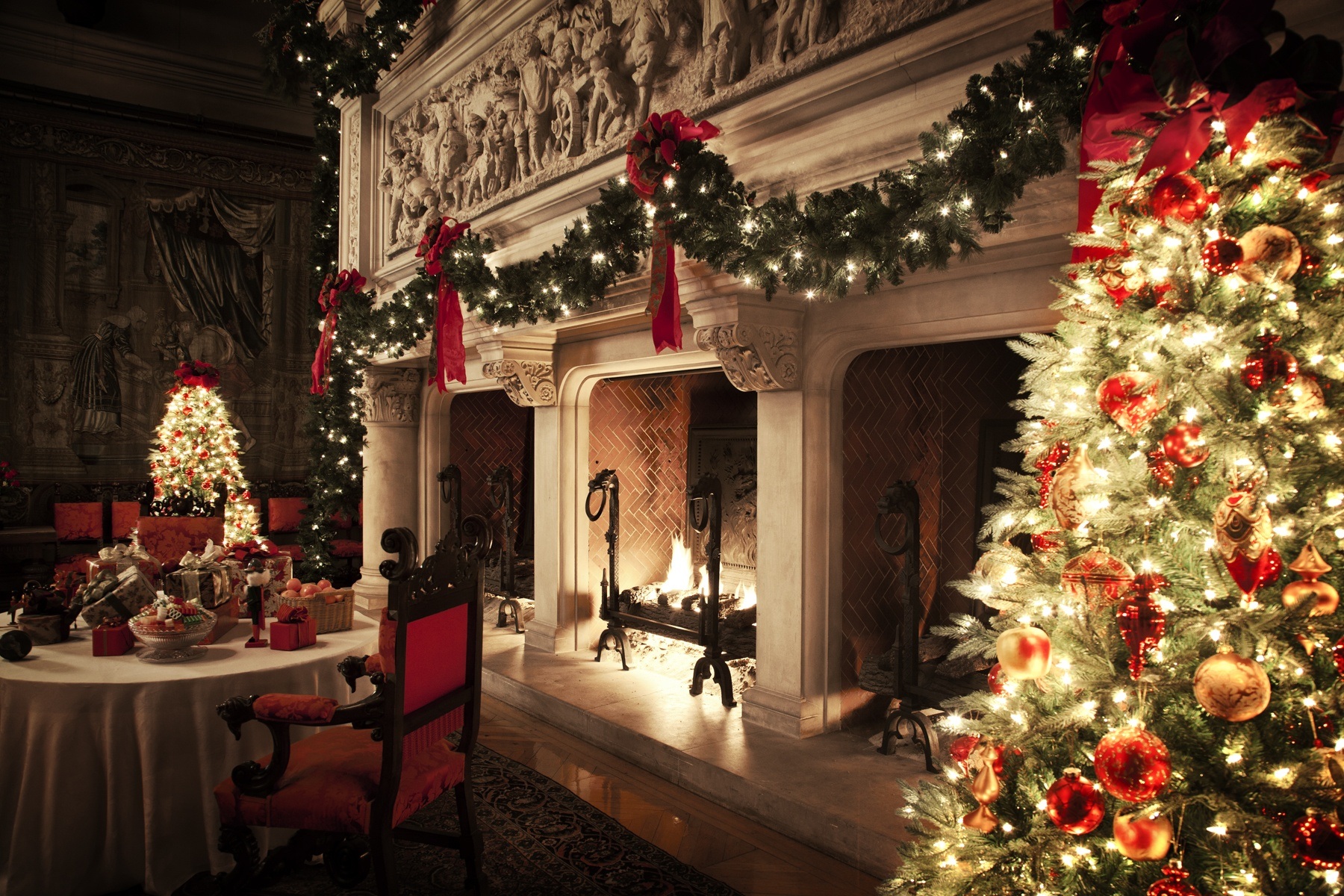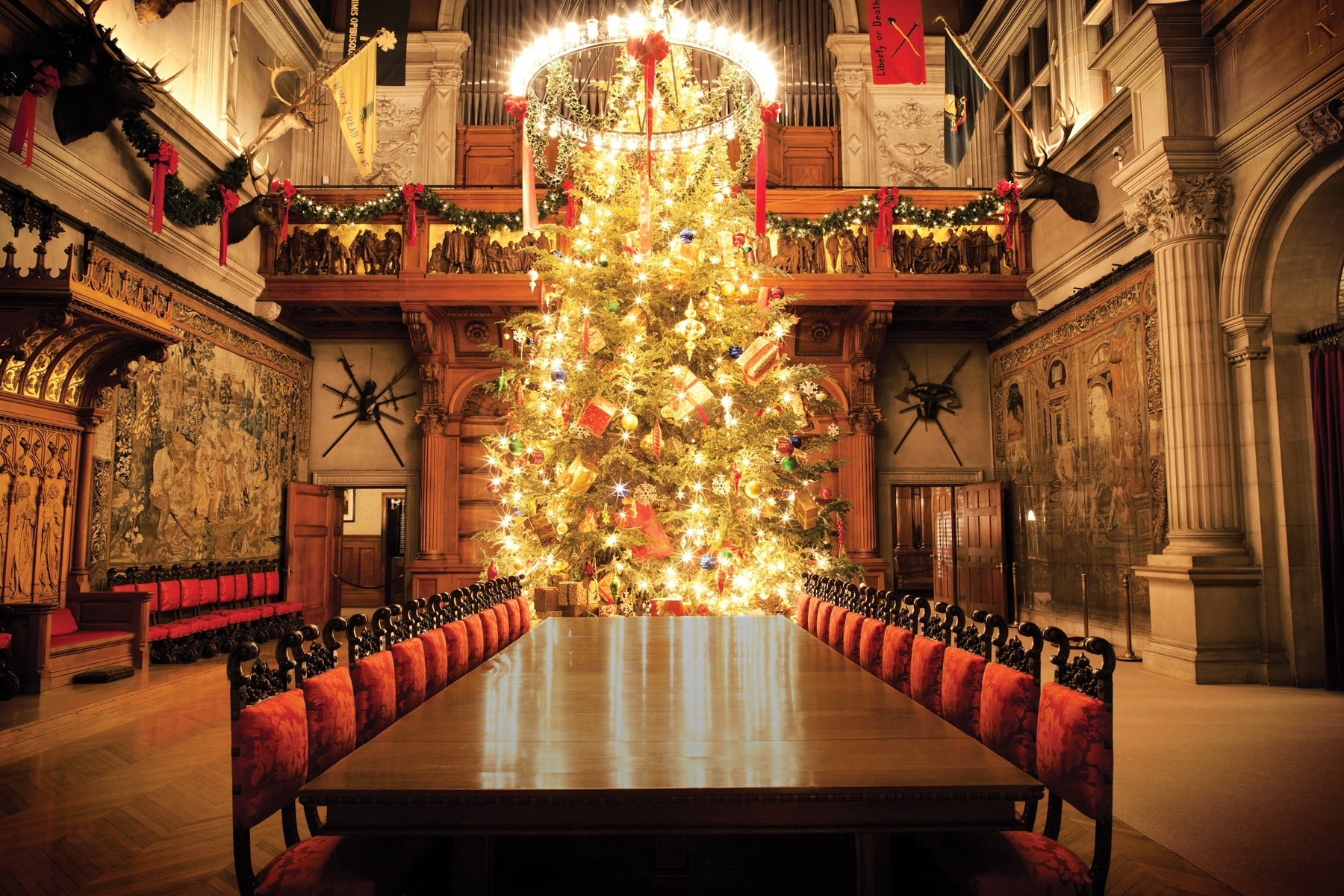
The iconic and beautiful decorated evergreen tree is a holiday staple in many households during the month of December. The Christmas tree tradition dates back to 1510 in Riga, Latvia. In the early years, it was decorated with paper, sweets and food. Tree decorations have certainly evolved through the centuries, but the tradition of a home displaying a tree has remained strong.
According the National Christmas Tree Association, the first Christmas tree was brought to Colonial America in 1777 by Hessian soldiers fighting for Britain during the American Revolution. But the Christmas tree custom really didn’t catch on and grow by leaps and bounds in the new world until German immigrant Charles Minnigerode, a professor at William and Mary, introduced the custom to high society in Colonial Williamsburg in 1842.
By 1851, the first Christmas tree lot opened in New York City. Five years later, the 14th President, Franklin Pierce, brought the first tree into the White House. By 1895, George Vanderbilt was searching for the perfect live tree for his banquet hall at the Biltmore Estate in Asheville, North Carolina, for his first Christmas eve in his new magnificent home in the Blue Ridge Mountains.
Year after year, the hunt for the perfect evergreen tree during the holiday season is a thrill for many families. Choosing live trees for your home supports farmers and sustainability.
“There is just something unique and special about the Christmas tree hunt. Consumers who purchase live trees are supporting farmers. Each tree is unique with its own fragrance. Nothing is cookie-cutter, and everyone’s experience is different based on the type of tree they choose.”
stated Marsha Gray, Director of Communications for the National Christmas Tree Association.
North Carolina, where the tourism attraction Biltmore Estate is located, is one of the top five Christmas tree-producing states in the U.S. The holidays on the Biltmore Estate are grand, and the estate sees over 300,000 visitors during its holiday season, which starts at the beginning of November and runs until the first week of the new year.

The main attraction is a 35-foot-tall Fraser Fir that floral designers have had growing by a father-and-son tree farming team in Avery County for at least 35 years. George and Gregg Andrews have been growing and nurturing Biltmore’s banquet hall trees since 1975. They have a dedicated section of their mountain nursery exclusive to Biltmore. They grow the banquet hall trees, and then they help source the front lawn’s Norway spruce yearly.
“The Andrews have been working with our floral displays manager, Cathy Barnhardt, for over 30 years. Cathy has a very particular look she is going for when she curates the banquet hall tree. In 1895, the Vanderbilts would have gone to a hillside and got a tree off the mountain. This is the tradition that she keeps with this spectacular tree.”
stated LeeAnn Donnelly, Senior Public Relations Director at Biltmore.
And Biltmore needs not just one, but two of these large Christmas trees during its holiday tourism season. Because the holiday season is stretched out over two months, Biltmore elves replace the tree mid-season when the house is closed. The first tree enters the home with visitor awe.
“The raising of our banquet hall Christmas tree is a crowd favorite. We do this a few days before we open for the holiday season,” remarked Donnelly. “The tree comes in on a horse-drawn carriage with Santa and a trumpet fanfare.”
The huge tree is paraded around the lawn then is parked at the front entrance. Forty to fifty employees then put poles under the tree and they begin to pole-raise, lift and move the 3,500-pound tree.
“It’s like a very well-choreographed dance by many of our staff as they navigate this tree inside the banquet hall.”

Each holiday season, Biltmore decorates with a new holiday theme. This year’s theme is “Hearth and Home.” The House sparkles with 30,000 twinkling lights, hundreds of candles reflecting in thousands of ornaments, while miles of garland accent every corner. Outside, 300 hand-lit luminaries adorn Biltmore House’s front lawn and draw attention to the lighted 55-foot Norway spruce draped with 45,000+ lights.
Biltmore’s banquet hall tree is much larger than the tree typically presented to the First Lady at the White House for the Blue room each year. This year’s White House tree will be a 19-foot Balsam-Veitch fir from Oconto, Wisconsin. The tree’s farmers, Dave and Mary Vander Velden, won the 2015 National Christmas Tree Contest, taking the title of Grand Champion.
“It’s a very big honor. In order to present a tree (to the White House), you have to win the national championship. It’s like winning the Super Bowl or a gold medal at the Olympics. It doesn’t get better than that,”
commented Dave Vander Velden of Whispering Pines Tree Farm.
“I started experimenting with these types of trees years ago, trying to find the goose that lays the golden egg. They are a group of very nice trees. They grow well and have what it takes to be a good tree.”
Dave Vander Velden said.
A National Christmas Tree Association member has presented the official White House Christmas Tree since 1966.
What about you – do you have a real Christmas tree this year?
Share yours on Instagram and use #skimbaco so we can see it! Happy Holidays!
This article originally appeared in our digital magazine.
 The iconic and beautiful decorated evergreen tree is a holiday staple in many households during the month of December. The Christmas tree tradition dates back to 1510 in Riga, Latvia. In the early years, it was decorated with paper, sweets and food. Tree decorations have certainly evolved through the centuries, but the tradition of a home displaying a tree has remained strong.
According the National Christmas Tree Association, the first Christmas tree was brought to Colonial America in 1777 by Hessian soldiers fighting for Britain during the American Revolution. But the Christmas tree custom really didn’t catch on and grow by leaps and bounds in the new world until German immigrant Charles Minnigerode, a professor at William and Mary, introduced the custom to high society in Colonial Williamsburg in 1842.
By 1851, the first Christmas tree lot opened in New York City. Five years later, the 14th President, Franklin Pierce, brought the first tree into the White House. By 1895, George Vanderbilt was searching for the perfect live tree for his banquet hall at the Biltmore Estate in Asheville, North Carolina, for his first Christmas eve in his new magnificent home in the Blue Ridge Mountains.
Year after year, the hunt for the perfect evergreen tree during the holiday season is a thrill for many families. Choosing live trees for your home supports farmers and sustainability.
The iconic and beautiful decorated evergreen tree is a holiday staple in many households during the month of December. The Christmas tree tradition dates back to 1510 in Riga, Latvia. In the early years, it was decorated with paper, sweets and food. Tree decorations have certainly evolved through the centuries, but the tradition of a home displaying a tree has remained strong.
According the National Christmas Tree Association, the first Christmas tree was brought to Colonial America in 1777 by Hessian soldiers fighting for Britain during the American Revolution. But the Christmas tree custom really didn’t catch on and grow by leaps and bounds in the new world until German immigrant Charles Minnigerode, a professor at William and Mary, introduced the custom to high society in Colonial Williamsburg in 1842.
By 1851, the first Christmas tree lot opened in New York City. Five years later, the 14th President, Franklin Pierce, brought the first tree into the White House. By 1895, George Vanderbilt was searching for the perfect live tree for his banquet hall at the Biltmore Estate in Asheville, North Carolina, for his first Christmas eve in his new magnificent home in the Blue Ridge Mountains.
Year after year, the hunt for the perfect evergreen tree during the holiday season is a thrill for many families. Choosing live trees for your home supports farmers and sustainability.
 The main attraction is a 35-foot-tall Fraser Fir that floral designers have had growing by a father-and-son tree farming team in Avery County for at least 35 years. George and Gregg Andrews have been growing and nurturing Biltmore’s banquet hall trees since 1975. They have a dedicated section of their mountain nursery exclusive to Biltmore. They grow the banquet hall trees, and then they help source the front lawn’s Norway spruce yearly.
The main attraction is a 35-foot-tall Fraser Fir that floral designers have had growing by a father-and-son tree farming team in Avery County for at least 35 years. George and Gregg Andrews have been growing and nurturing Biltmore’s banquet hall trees since 1975. They have a dedicated section of their mountain nursery exclusive to Biltmore. They grow the banquet hall trees, and then they help source the front lawn’s Norway spruce yearly.
 Each holiday season, Biltmore decorates with a new holiday theme. This year’s theme is “Hearth and Home.” The House sparkles with 30,000 twinkling lights, hundreds of candles reflecting in thousands of ornaments, while miles of garland accent every corner. Outside, 300 hand-lit luminaries adorn Biltmore House’s front lawn and draw attention to the lighted 55-foot Norway spruce draped with 45,000+ lights.
Biltmore’s banquet hall tree is much larger than the tree typically presented to the First Lady at the White House for the Blue room each year. This year’s White House tree will be a 19-foot Balsam-Veitch fir from Oconto, Wisconsin. The tree’s farmers, Dave and Mary Vander Velden, won the 2015 National Christmas Tree Contest, taking the title of Grand Champion.
Each holiday season, Biltmore decorates with a new holiday theme. This year’s theme is “Hearth and Home.” The House sparkles with 30,000 twinkling lights, hundreds of candles reflecting in thousands of ornaments, while miles of garland accent every corner. Outside, 300 hand-lit luminaries adorn Biltmore House’s front lawn and draw attention to the lighted 55-foot Norway spruce draped with 45,000+ lights.
Biltmore’s banquet hall tree is much larger than the tree typically presented to the First Lady at the White House for the Blue room each year. This year’s White House tree will be a 19-foot Balsam-Veitch fir from Oconto, Wisconsin. The tree’s farmers, Dave and Mary Vander Velden, won the 2015 National Christmas Tree Contest, taking the title of Grand Champion.
